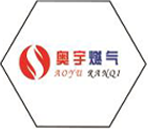
Oct . 12, 2024 17:14
Back to list
محطة تخفيض ضغط الغاز الطبيعي
Natural Gas Pressure Reduction Stations An Overview
Natural gas is one of the most utilized energy sources worldwide, playing a crucial role in heating, electricity generation, and as a fundamental fuel for various industries. However, to ensure that natural gas reaches consumers safely and effectively, it must be processed and distributed through a complex network of pipelines and infrastructure. One of the critical components of this infrastructure is the natural gas pressure reduction station, which plays a vital role in controlling and regulating the pressure of natural gas as it travels from production areas to end-users.
What is a Natural Gas Pressure Reduction Station?
A natural gas pressure reduction station is a facility that reduces the high pressure of gas coming from transmission pipelines to a lower pressure that is suitable for distribution to consumers. In most cases, the natural gas is transported from extraction sites to processing plants through high-pressure pipelines. At various points along this distribution system, pressure reduction stations are employed to ensure that the gas can be safely delivered to homes, businesses, and industries.
The Importance of Pressure Regulation
Maintaining the correct pressure in a natural gas pipeline is essential for several reasons
1. Safety High-pressure gas can pose significant risks if it leaks or ruptures a pipeline. Reducing the pressure minimizes the risk of accidents and ensures safer transportation and consumption of gas.
2. Efficiency By regulating the pressure, operators can ensure that gas moves efficiently through the pipeline system, reducing energy losses and optimizing performance.
3. Consumer Needs Different consumers have different pressure requirements. Industrial users may require higher pressure than residential customers. Pressure reduction stations allow for this customized distribution to meet varying needs.
.
Pressure reduction stations employ various types of equipment and technology to accomplish pressure reduction. Although the specific designs can vary, the fundamental components typically include
محطة تخفيض ضغط الغاز الطبيعي

1. Pressure Regulators These devices automatically adjust the pressure of the gas flowing through the station. They work by opening or closing in response to pressure changes, thus maintaining a constant output pressure.
2. Valves Isolation and control valves help manage the flow of gas through the station, allowing maintenance or emergency shutdowns without interrupting the supply to consumers.
3. Filter Systems As gas is transported, it can become contaminated with debris. Filter systems in pressure reduction stations help remove this debris, ensuring that only clean gas is delivered to consumers.
4. Metering Equipment To accurately track gas usage and maintain billing systems, metering equipment is included in the station setup.
5. Telemetry Systems Modern pressure reduction stations may employ advanced telemetry systems that monitor pressure and flow rates in real time, providing operators with essential data to manage the gas supply effectively.
Environmental and Regulatory Considerations
Natural gas pressure reduction stations are subject to strict environmental and safety regulations. Operators must adhere to national and local laws regarding emissions, noise levels, and community safety. Many stations are also equipped with systems to minimize methane emissions, a potent greenhouse gas.
Furthermore, renewable energy integration and improving efficiency are current trends reshaping the natural gas industry. As the world moves towards sustainable energy solutions, natural gas remains a transition fuel, and pressure reduction stations will evolve to accommodate this shift.
Conclusion
In conclusion, natural gas pressure reduction stations are essential for the safe, efficient, and reliable distribution of natural gas. They play a critical role in managing the pressure, ensuring consumer safety, and meeting diverse energy needs. As the energy landscape continues to change, these stations will remain a cornerstone of the natural gas supply chain, adapting to new technologies and environmental considerations, while continuing to provide a necessary service to society.
Latest news
-
Safety Valve Spring-Loaded Design Overpressure ProtectionNewsJul.25,2025
-
Precision Voltage Regulator AC5 Accuracy Grade PerformanceNewsJul.25,2025
-
Natural Gas Pressure Regulating Skid Industrial Pipeline ApplicationsNewsJul.25,2025
-
Natural Gas Filter Stainless Steel Mesh Element DesignNewsJul.25,2025
-
Gas Pressure Regulator Valve Direct-Acting Spring-Loaded DesignNewsJul.25,2025
-
Decompression Equipment Multi-Stage Heat Exchange System DesignNewsJul.25,2025

